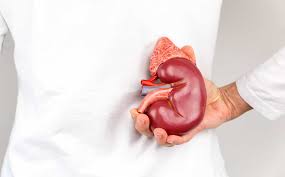Article
FDA Grants Immunotherapy Duo a Priority Review for Kidney Cancer
Author(s):
Frontline Opdivo (nivolumab) plus Yervoy (ipilimumab) was granted a priority review to a supplemental biologics license application (sBLA) to be used to treat patients with intermediate- and poor-risk patients with advanced renal cell carcinoma (RCC).
Frontline Opdivo (nivolumab) plus Yervoy (ipilimumab) was granted a priority review to a supplemental biologics license application (sBLA) to be used to treat patients with intermediate- and poor-risk patients with advanced renal cell carcinoma (RCC).
The sBLA is based on the phase 3 CheckMate-214 trial, in which frontline treatment with the combination of Opdivo and Yervoy reduced the risk of death by 32 percent compared with Sutent (sunitinib) for patients with mRCC.
In the randomized trial, the median overall survival (OS) was not reached with the combination versus 32.9 months with Sutent . In those specifically with intermediate- and poor-risk RCC, who constituted about 75 percent of the intent-to-treat (ITT) population, median OS was not reached in the Opdivo and Yervoy arm and was 26 months in the Sutent arm, a 37 percent reduction in the risk of death. There was not a benefit for the combination versus Sutent in those with favorable risk.
The regimen previously received an FDA breakthrough therapy designation in this setting. The agency is scheduled to make its final decision on the sBLA on or before April 16, 2018.
“Breakthrough therapy designation and today’s filing acceptance for the Opdivo plus Yervoy combination are an important step in our ongoing efforts to advance therapies to address a high unmet need in first-line treatment of kidney cancer in intermediate- and poor-risk patients,” Murdo Gordon, executive vice president and chief commercial officer, Bristol-Myers Squibb, said in a press release.
CheckMate-214 included patients with advanced or metastatic clear cell RCC who were treatment-naïve. Patients were randomized in a 1-1 ratio to Opdivo, 3 mg/kg, plus Yervoy, 1 mg/kg, every three weeks for four doses, followed by Opdivo, 3 mg/kg every two weeks; or to receive oral Sutent, 50 mg a day for four weeks in six-week cycles. Patients were stratified by risk group and region, and treatment was continued until disease progression or unacceptable toxicity.
In the 1096 patients in the ITT population, 23 percent were considered favorable risk, 61 percent as intermediate risk, and 17 percent as poor risk in each arm. As well, about one fourth in the ITT population had PD-L1 expression of at least 1 percent. Among the 847 patients in the intermediate- or poor-risk groups, 79 percent were classified as intermediate risk (IMDC 1-2) and 21 percent as poor risk (IMDC 3-6) in each treatment arm. About one-fourth of the patients in each arm had PD-L1 expression at least 1 percent.
The most common sites of metastasis were the lung (approximately 70 percent), lymph nodes (approximately 50 percent), liver (approximately 20 percent) and bone (approximately 20 percent). Coprimary endpoints were ORR per independent radiology review committee (IRCC), progression-free survival (PFS; per IRRC), and OS.
Across the full ITT, the median PFS was not improved, which had been announced prior to the ESMO meeting (12.4 vs 12.3 months). PFS in the intermediate- and poor-risk group was 11.6 months with the combination versus 8.4 months with Sutent.
Across the full study, the confirmed overall response rate (ORR) was 39 percent and 32 percent in the Opdivo Yervoy group and Sutent group, respectively. The confirmed ORR in the intermediate/poor risk patients was 42 percent in patients assigned to Opdivo plus Yervoy compared with 27 percent in those assigned to Sutent. Nine percent of patients in the Opdivo / Yervoy group had a complete response (CR) and 32 percent had a partial response, compared with 1 percent CR and 25 percent, respectively, in the Sutent group. The median duration of response was significantly superior with Opdivo / Yervoy compared with Sutent (not reached vs 18.2 months).
Favorable risk patients, in contrast, had a significantly higher confirmed ORR with Sutent versus the combination arm (52 percent vs 29 percent), as well as a significantly longer PFS (25.1 vs 15.3 months).
In those with PD-L1 expression 1 percent or more, the median PFS was significantly longer with the immunotherapy combination than with Sutent (22.9 vs 5.9 months). Those with PD-L1 expression less than 1 percent did not benefit from the combination.
Among all treated patients, with a median follow-up of 25.2 months, 77 percent of patients assigned to Opdivo plus Yervoy and 82 percent assigned to Sutent discontinued treatment. The main reason for discontinuation in each group was disease progression (42 percent in the combination immunotherapy group and 55 percent in the Sutent group). The median duration of therapy was 7.9 and 7.8 months, respectively. In the immunotherapy arm, the median number of Opdivo doses received was 14 and the median number of Yervoy doses received was 4. Seventy-four percent of patients received all four doses of Yervoy.
Adverse events (AEs) leading to discontinuation occurred in 22 percent of patients in the combination immunotherapy group compared with 12 percent in the Sutent group. The most common grade 3/4 AEs in the combination group were fatigue (4 percent) and diarrhea (4 percent). In the Sutent group, the most common grade 3/4 AEs were hypertension (16 percent), fatigue (9 percent), and Palmar-plantar erythrodysesthesia syndrome (9 percent). There were seven treatment-related deaths in the combination group and four in the Sutent group.




